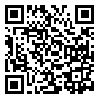Volume 3, Issue 1 (3-2014)
JCP 2014, 3(1): 89-98 |
Back to browse issues page
Download citation:
BibTeX | RIS | EndNote | Medlars | ProCite | Reference Manager | RefWorks
Send citation to:



BibTeX | RIS | EndNote | Medlars | ProCite | Reference Manager | RefWorks
Send citation to:
Amini Jam N, Kocheili F, Mossadegh M S, Rasekh A, Saber M. Lethal and sublethal effects of imidacloprid and pirimicarb on the melon aphid, Aphis gossypii Glover (Hemiptera: Aphididae) under laboratory conditions. JCP 2014; 3 (1) :89-98
URL: http://jcp.modares.ac.ir/article-3-4780-en.html
URL: http://jcp.modares.ac.ir/article-3-4780-en.html
1- Department of Plant Protection, Faculty of Agriculture, Shahid Chamran University, Ahvaz, Iran.
2- Department of Plant Protection, Faculty of Agriculture, University of Maragheh, Maragheh, Iran.
2- Department of Plant Protection, Faculty of Agriculture, University of Maragheh, Maragheh, Iran.
Abstract: (5182 Views)
The toxicity of imidacloprid and pirimicarb for all stages of the melon aphid, Aphis gossypii Glover, were investigated under laboratory conditions (25 ± 1 oC, 65 ± 5% R.H. and a photoperiod of 16:8 (L: D) h.) using a leaf dipping method. These pesticides were very toxic for first instar nymphs of A. gossypii with LC50 values of 17 and 220.2 ppm for imidacloprid and pirimicarb, respectively. For other nymphal instars, values of 23.9 to 70.5 ppm and 308.8 to 781.7 ppm were recorded for imidacloprid and pirimicarb respectively. Their LC50 values for adults were 90.1 and 983.1 ppm, respectively. Toxicity decreased with increasing age. Imidacloprid was more toxic than pirimicarb for all stages of development. The effect of applying sublethal concentrations of imidacloprid and pirimicarb was evaluated, also, using demographic toxicology. Longevity and population growth parameters, including intrinsic rate of increase (rm), net reproductive rate (R0), generation time (Tc) and finite rate of population increase (λ), were affected negatively by both insecticides. The rm values for control, imidacloprid and pirimicarb exposed populations were 0.438, 0.150 and 0.335 female offspring per female per day, respectively. The doubling time (DT) also, was affected by imidacloprid. Overall, these results suggest that imidacloprid and pirimicarb can be effective against A. gossypii.
Received: 2013/04/24 | Accepted: 2013/11/2 | Published: 2014/11/1
| Rights and permissions | |
 |
This work is licensed under a Creative Commons Attribution-NonCommercial 4.0 International License. |








